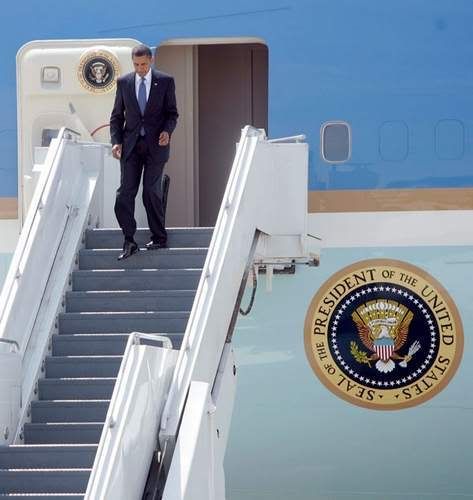(Source: New York Times & Associated Press)

Like most large international conferences, the United Nations climate summit meeting in New York this week generated a hefty dose of greenhouse gas emissions.
Hundreds of presidents, prime ministers and officials from across the globe this week took airplanes to the United Nations meeting, some accompanied by dozens of people. Limousines and motorcades ferried the dignitaries from airports to meetings to hotels and back, often getting stuck in Midtown Manhattan gridlock.
But since the goal of this meeting was to reduce the global emissions that have been linked to global warming, the United Nations decided to try to do something about all the carbon dioxide produced by the delegates: it bought carbon offsets.
Under a new and expanding program for offsetting emissions, United Nations administrators calculated that the meeting would generate the equivalent of 461 tons of carbon dioxide, with air travel being the single largest component. They offset those emissions by directing money to a power project in rural Andhra Pradesh, India, through which agricultural leftovers like rice husks and sunflower stalks are turned into electricity for the local grid.
The offsets are intended to cancel out the carbon dioxide emissions created by airline travel or driving by financing green projects that will eliminate as much CO2 as the polluting activities create.
The United Nations first tried its hand at large-scale offsets two years ago, shortly after Secretary General Ban Ki-moon, who called Tuesday’s conference, took office and declared that climate issues would be a central theme of his tenure.
“The secretary general started talking about greening the U.N. and that we needed to lead by example,” said Dan Shepard, a United Nations spokesman in New York.
Of necessity, figuring out how much carbon dioxide needs to be offset for a large meeting involves choices. In calculating the potential emissions of the New York meeting, the United Nations tallied the airline emissions for the flights of each leader and one aide, even though many of the leaders who attended have larger delegations.
Ban opened the gathering on Tuesday with an appeal to leaders to set aside national interests and think about the future of the planet — and included a rebuke for their foot-dragging thus far. The summit drew more than 50 presidents, 35 prime ministers and many environment ministers.
The U.N. conference and the G-20 summit in Pittsburgh this week are believed to be an attempt to pressure wealthier nations into adopting a global climate treaty during a pivotal conference in December in Copenhagen, Denmark. The treaty would also tie in financing for poorer nations to burn less coal and preserve their forests.
Click here to read the entire article.



